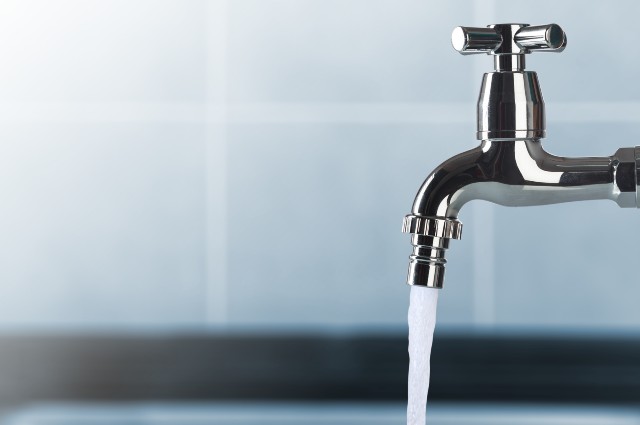How to Remove Airlock from Water Pipes

Confusion and inconvenience are common when there are airlocks in water lines. Water flow can be significantly decreased or stopped entirely in your plumbing system if air becomes trapped.
You may avoid hiring a plumber and save time and money by learning how to remove an airlock from your water pipes. We will take you step-by-step through the process of fixing airlocks in your water pipes in this extensive tutorial.
Identifying an airlock
It’s important to correctly identify whether an airlock or another issue is causing your water pipes to malfunction before attempting to remove an airlock. You may spot an airlock by looking for a few typical signs:
Low water pressure
A discernible drop in water pressure coming from your taps, faucets, or showerheads is one of the main signs of an airlock. An airlock in the plumbing system may be indicated if you notice a noticeable drop in water pressure as compared to normal flow.
Spluttering or spitting water
The smooth flow of water is disrupted and problems in the water stream result from trapped air in the pipes. Water spluttering or spitting might be an indication that air pockets are blocking the flow. This kind of thing usually happens when you turn on the shower or tap and the water flow is unpredictable or inconsistent.
No water flow
In more serious situations, an airlock may totally stop the water’s passage through the damaged pipes. This may cause the water supply from some taps or fixtures that are linked to the impacted plumbing lines to stop completely. An airlock can be the cause if you discover that some outlets aren’t producing any water flow even if they are working.
Materials Needed
Before embarking on the airlock removal process, ensure you have the following materials readily available:
- Bucket
- Towels
- Adjustable Wrench
- Pliers
- Screwdriver
- Hose (optional)
Step-by-step guide to removing an airlock from weather pipes
Once you’ve confirmed the presence of an airlock, follow these detailed steps to effectively remove it from your water pipes:
1. Turn off the water supply
Locate your home’s main water supply valve; it is typically found close to the water metre or the location where the main water line enters the structure. Turn the valve clockwise to shut off the water supply. This protective measure lowers the chance of leaks or water damage while you try to remove the airlock by stopping any water flow.
2. Identify the affected tap
Carefully assess which tap or fixture is experiencing the airlock issue. Take note of any signs such as low water pressure, spluttering, or no water flow. By identifying the specific area affected, you can focus your efforts on resolving the issue efficiently.
3. Open the faucet
Fully open the affected tap by turning the handle counterclockwise. This action allows any residual water pressure within the pipes to dissipate. Opening the tap maximally creates an avenue for trapped air to escape once the removal process begins.
4. Prepare your tools
Before proceeding, gather the necessary tools and equipment listed earlier, ensuring they are readily accessible near the affected area. This preparation minimises disruptions and facilitates a smoother removal process.
5. Locate the airlock
Thoroughly inspect the pipes near the affected tap, paying close attention to any bends, junctions, or high points where air may have become trapped. By identifying the precise location of the airlock, you can target your efforts effectively during the removal process.
6. Bleed the airlock
On the impacted pipe joint, carefully release the nut with pliers or an adjustable wrench. Take care not to damage the pipe or fittings when you loosen the nut. Expect some trapped air to escape along with some water as you slowly release the nut. Keep turning the nut loose until you notice a consistent stream of water and hear a clear hissing sound, which indicates that trapped air has been released.
7. Monitor water flow
While bleeding the airlock, closely monitor the water flow from the tap. Pay attention to any changes in flow patterns or the presence of air bubbles in the water stream. Once you achieve a consistent flow of water without spluttering or air pockets, you have successfully eliminated the airlock.
8. Tighten the nut
After removing the airlock and restoring water flow, use your wrench or pliers to securely tighten the nut back into place. Ensure the nut is snugly tightened to prevent water leaks or future airlock occurrences.
9. Test the tap
Turn on the water supply by reopening the main water supply valve and test the affected tap to verify that the airlock has been successfully removed. Check for a steady, uninterrupted flow of water from the tap, confirming the resolution of the issue.
10. Check other taps
As a precautionary measure, inspect other taps and fixtures in your home to ensure no additional airlocks are present. Test each tap individually to confirm proper water flow and address any potential issues promptly.
Avoiding airlocks in the future
Take into consideration putting these preventive steps in place to lessen the likelihood that airlocks will develop in your water pipes in the future:
Regular maintenance: Plan on doing routine maintenance on your plumbing system to identify possible problems early on and take appropriate action.
Correct installation: Make sure that all of the pipes and fixtures are set up properly to reduce the possibility of trapped air in the system.
Avoid abrupt pressure changes: Activities that can result in abrupt pressure changes in the water should be avoided as they raise the possibility of airlock formation.
Flush your plumbing system periodically to get rid of any collected silt or debris that might be causing an airlock to form.
Conclusion
You may easily remove an airlock from your water pipes by using simple equipment and paying close attention to every detail. You may successfully resolve airlock problems in your plumbing system and keep a steady flow of water throughout your house by referring to the detailed procedures provided in this book and taking preventative measures. If you think that you are not capable of dealing with removing an airlock in your pipes on your own you can always turn to professional plumbers for help.
How to Remove Airlock from Water Pipes
Need help? Hire the London Property Service experts today by giving us a call on 020 3078 5920.




